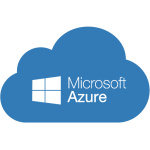About Microsoft Azure SQL Database
Microsoft Azure is a public cloud computing service designed for building, testing, launching, and managing applications and services via Microsoft-managed data centers. Through its platform-as-a-service (PaaS), software-as-a-service (SaaS), and infrastructure-as-a-service (Iaas) offerings, Microsoft Azure integrates with a wide range of programming languages and tools. In addition to working with Microsoft's proprietary software and systems, Azure is compatible with third-party solutions, including Linux. As an extremely popular cloud services platform, many businesses and enterprises have used Microsoft Azure to migrate their computer systems to the cloud and eliminate the costs and staff requirements needed to maintain physical onsite servers.
About Mode
As an advanced, high-speed data analytics platform, Mode helps you understand the information in your data warehouses. As a hybrid solution Mode lets (1) data teams customize queries and visualizations in Python, SQL, or R; and (2) empowers non-tech-savvy users to dive into visualizations and explore live-updating reports to get the data they need.
Popular Use Cases
Bring all your Mode data to Amazon Redshift
Load your Mode data to Google BigQuery
ETL all your Mode data to Snowflake
Move your Mode data to MySQL
Microsoft Azure SQL Database's End Points
Microsoft Azure Virtual Machines
As one of its IaaS features, Microsoft Azure allows users to deploy virtual machines developed in Windows or Linux.
Microsoft Azure App Services
As one of its PaaS features, Azure App Services allows you to publish and manage websites and web applications.
Microsoft Azure WebApps
WebApps is Microsoft Azure's high-density web hosting service, which allows you to build web applications more efficiently with PHP, Node.Js, or Python, then deploy them on the Azure Cloud.
Microsoft Azure WebJobs
WebJobs gives you the ability to launch applications in the Microsoft App Services space and host them in the cloud.
Microsoft Azure Mobile Engagement Services
Microsoft Azure's mobile engagement service provides real-time tracking, data analytics, and deep insights to better understand user engagement and behavior for your mobile applications.
Microsoft Azure HockeyApp
Microsoft Azure's HockeyApp is a productivity-enhancing driver that helps you design, build, beta test, and distribute mobile apps more efficiently.
Microsoft Azure REST and SDK APIs
Azure's REST and SDK APIs allow you to store and access your application data on Azure's cloud platform.
Microsoft Azure Table Services
Azure Table Services facilitates the storage of data in structured text form so you can access it via a partition and primary key.
Microsoft Azure Blob Service
Blob Service empowers you to store unstructured text information and binary data as 'Blobs' accessible through HTTPS.
Microsoft Azure Queue Service
Queue Service streamlines asynchronous communication across multiple programs.
Microsoft Azure File Service
Azure File Service facilitates cloud data storage via REST API and the SMB Protocol.
Microsoft Azure Search Functionality
Azure's data search functionality supports more efficient data searching with REST and SDK APIs.
Microsoft Azure SQL Data Warehouse
Azure's SQL data warehouse is managed by Microsoft within the Azure Cloud Facility. It offers high-performance querying and enhanced data security.
Microsoft Azure Messaging Service
Azure Service Bus is a messaging service that facilitates communication between the Azure Cloud and applications operating on-site and off-site to build more reliable and scalable applications. The Azure Service Bus supports communication via Event Hubs, Queues, Topics, and Relays.
Microsoft Azure Automation Features
Azure Automation allows users to automate frequently-repeated tasks that they perform in their cloud and enterprise environments to save time and prevent human errors. Automation improves the reliability of common administrative tasks. Azure automation allows you to schedule tasks with runbooks or use Desired State Configuration for the automation of configuration management tasks.
Mode's End Points
Mode White-Label Embeds and Visualizations
Mode's White-Label Embeds allow you to integrate customized, interactive visualizations, and analytics into your applications — so your customers can access powerful reporting that seamlessly blends with your apps. White-Label Embeds also secure your data by ensuring that specific customers see appropriate information only. Lastly, Mode includes pre-built charts and the ability customize your visualizations in JavaScript, HTML, and CCS.
Mode SQL Editor
Mode's SQL editor features a schema browser to explore the tables and columns of your connected data sources. It also has an autocomplete function to assist with query writing, a query history to browse and reuse old queries, and advanced logic tools for creating loops, IF statements, and more.
Mode Helix Data Engine
The technology behind Mode's analytics solution is Helix, a high-performance in-memory data engine that combines modern drag-and-drop business intelligence tools with a code-first (SQL, Python, R) data science platform to offer an instantly responsive user experience. Mode streams query results into the Helix data engine to reduce database load, provide quick responsiveness, and give users the ability to visually navigate as much as 10 gigabytes of data.
Mode Dashboard Features
Powered by SQL, Python, and R, Mode dashboards display automatically-refreshing metrics without the need for proprietary tools. Customize your dashboards the way you want, with on-brand reporting and interactive features to facilitate collaboration with others across your organization.
Mode Native Python and R Notebooks
Mode features native Python and R Notebooks. This allows you to query in SQL, send the results to a dataframe in R or pandas, and conveniently access them in the platform's native Notebook. At the same time, a sidebar provides tips, shortcuts, and documentation to help you get the most of these features.








